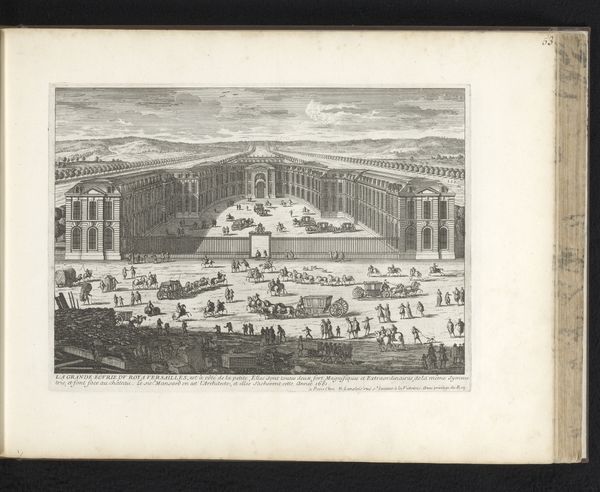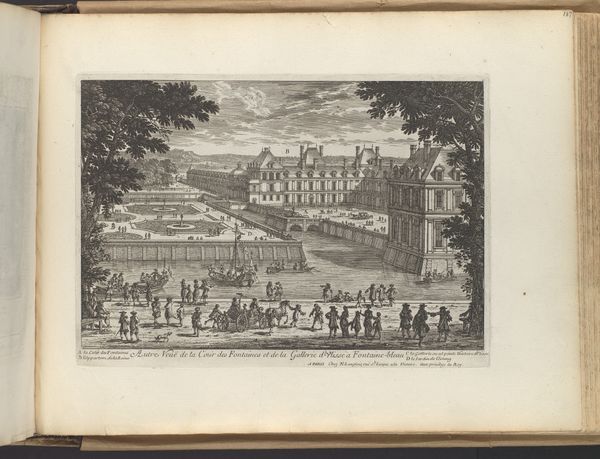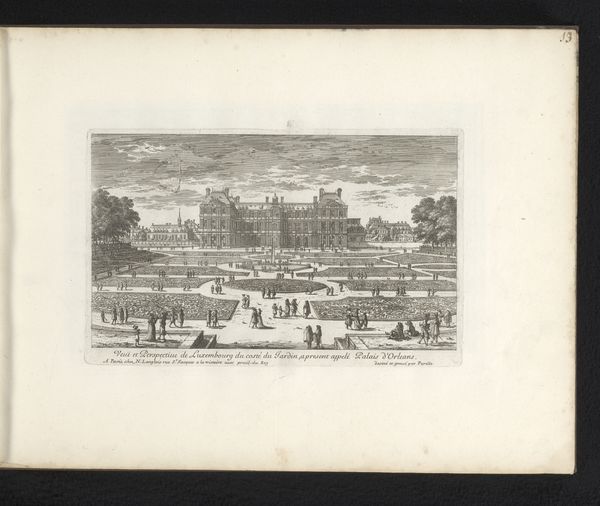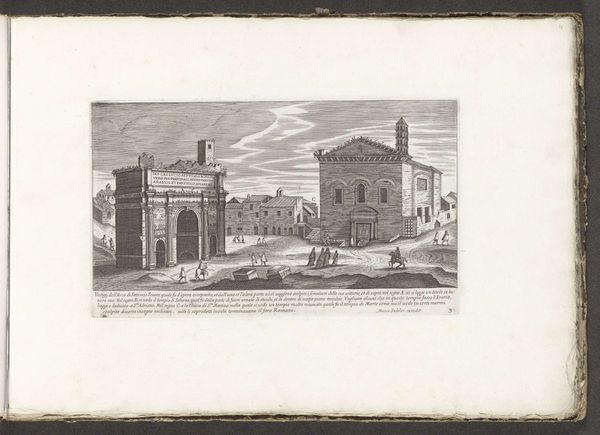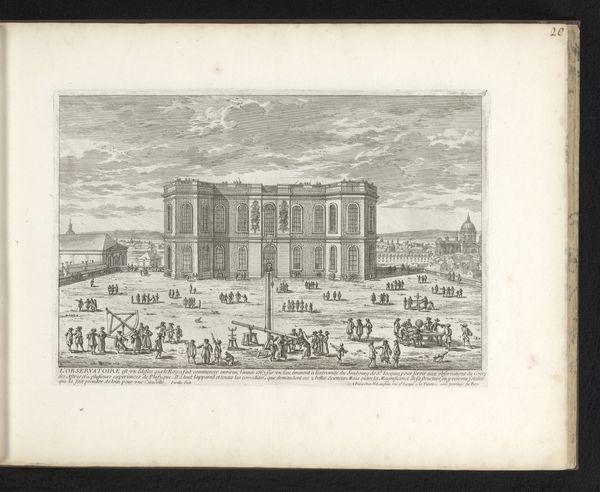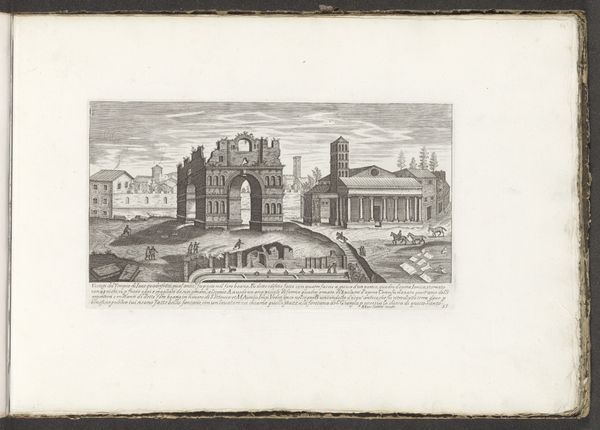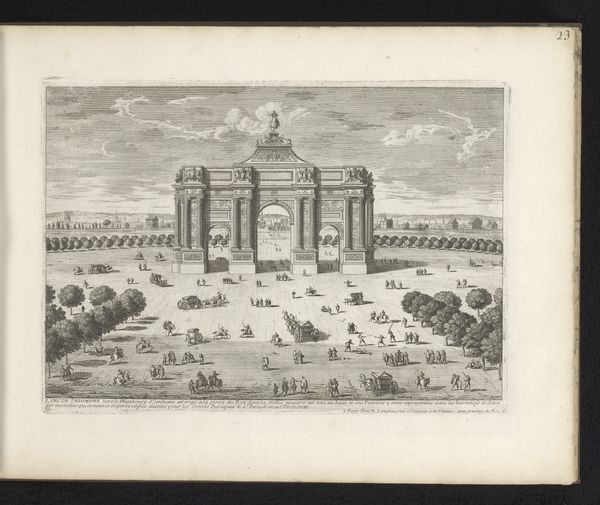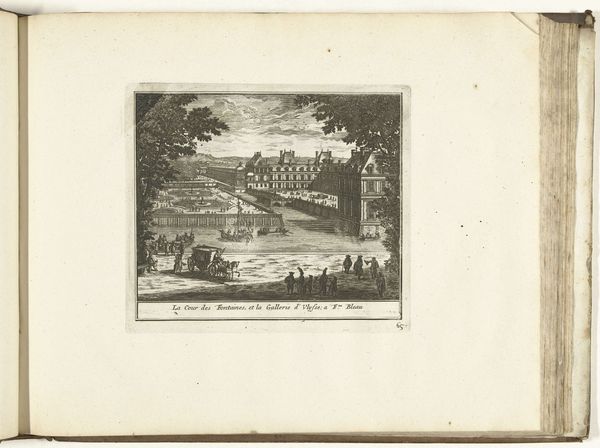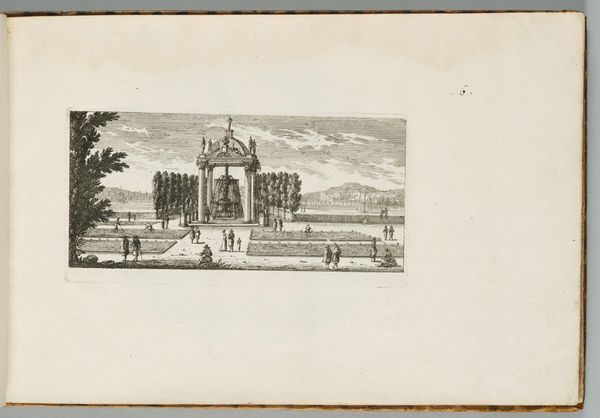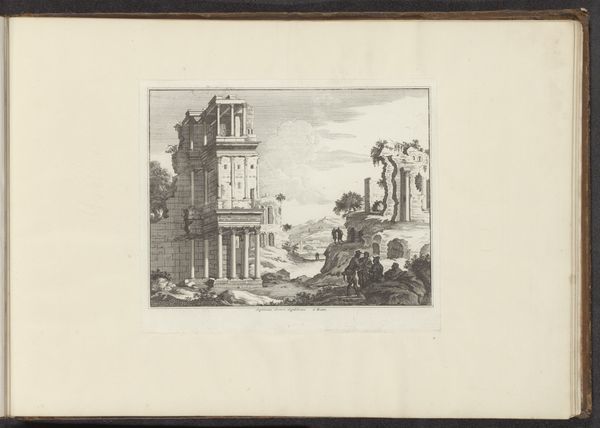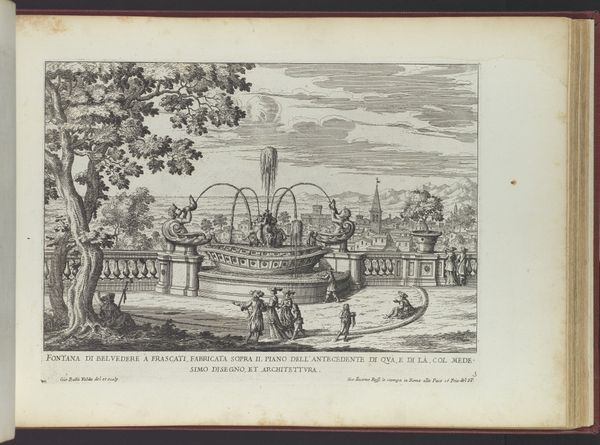
print, paper, ink, engraving
#
baroque
#
ink paper printed
# print
#
old engraving style
#
landscape
#
paper
#
ink
#
cityscape
#
engraving
Dimensions: height 156 mm, width 245 mm
Copyright: Rijks Museum: Open Domain
Editor: This is Adam Perelle's "View of the Grotto of Vaux-le-Vicomte," an ink engraving on paper from sometime between 1650 and 1691. The scene has a theatrical quality – the grotto seems like a stage set. What catches your eye? Curator: The formal garden itself acts as a symbol, doesn't it? Representing not merely beauty but also control – humankind's imposition of order onto nature. Notice the repetition of forms – the symmetrical layout of the landscaping, mirrored in the architecture. These speak to the Baroque aesthetic, celebrating grandeur and the power of the monarchy, echoing themes of triumph and dominion. Does the rigidity feel intentional to you? Editor: Absolutely, it’s almost oppressive in its perfect symmetry! What about the people in the foreground? Curator: Ah, the figures add another layer. They’re enjoying the space, but they're also diminutive, dwarfed by the architecture. What does that positioning suggest about humankind's place in this constructed world? Perhaps highlighting our aspirations for something greater than ourselves. What emotions surface when you study the figures? Editor: They seem peaceful and unconcerned, almost oblivious to the grand scheme. Maybe that juxtaposition emphasizes the fleeting nature of life against the backdrop of enduring power? I hadn't considered the symbolism in that light. Curator: Consider how, as viewers, we too are positioned within this symbolic landscape. Are we admiring spectators or perhaps also subtly reminded of a certain…distance between power and the everyday? Editor: That tension definitely enriches the artwork! Thanks; this was helpful.
Comments
No comments
Be the first to comment and join the conversation on the ultimate creative platform.

